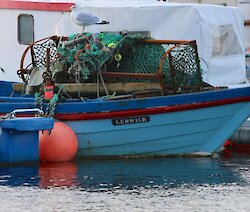Shellfish landings up by almost a fifth

Landings of top-quality shellfish in Shetland rose by 18 per cent between 2011 and 2012, newly-compiled figures reveal.
The vast majority of the 1,843 tonnes recorded – 94 per cent – was caught by boats registered here and the remainder by boats from outside the isles.
The value of the catch increased from just over £3 million in 2011 to £3.5 million in 2012, according to calculations by Dr Ian Napier of the NAFC Marine Centre in Scalloway.
It follows the announcement by the Marine Stewardship Council (MSC) in March 2012 that the three main species of the fishery – scallops, brown crab and velvet crab – within six miles of Shetland had been declared sustainable.
The award – a world first – was in recognition of the good management regime and the environmentally-responsible way the shellfish are caught.
Inshore co-ordinator for the Shetland Shellfish Management Organisation (SSMO) Carole Laignel said: “Shetland shellfish has an excellent reputation, and that has been bolstered by the MSC accreditation.
“The increase in landings is obviously good news, particularly as the fishery continues to provide jobs for fishermen in rural areas.”
She said a new board structure had recently been agreed for the SSMO and an advisory committee has been formed.
“This group has been tasked with establishing a management plan – and this will include a framework for making decisions regarding new entrants.
“We are audited regularly by the MSC and a recent stock assessment, the results of which will be available early next year, will determine whether new licences can be issued.”
Unlike white fish and pelagic fish, most of which is landed in Lerwick and Scalloway, shellfish landings are more widely distributed throughout the islands.
Just 29 per cent of the shellfish landings in 2012 were made in Lerwick, seven per cent in Scalloway, 20 per cent in Central Mainland (including Sellaness, Toft, Vidlin and Voe) and 13 per cent in West Mainland (including Aith and West Burrafirth).